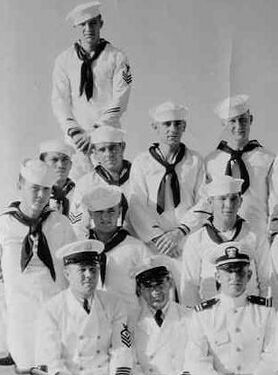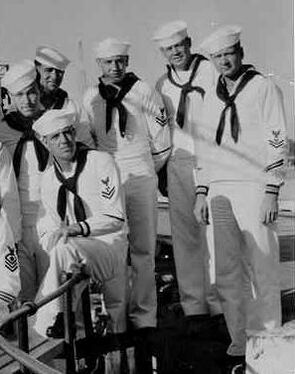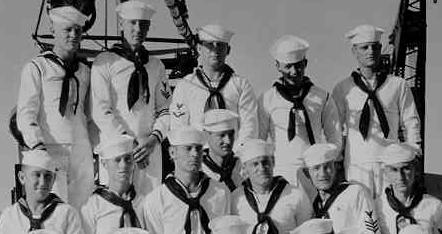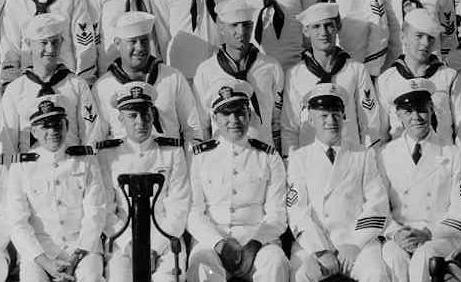S-25: Difference between revisions
Pbcjohnston (talk | contribs) Added photos and captions |
Pbcjohnston (talk | contribs) Added photos |
||
| Line 23: | Line 23: | ||
[[File:S-25 tender 1.jpg|left|500px]] | [[File:S-25 tender 1.jpg|left|500px]] | ||
<div style="text-align: justify;"><span style="color:#00008B">On September 9, 1925 the S-25, [[S-28|'''S-28 (SS-133)''']] and another S-class submarines were visiting San Francisco, CA. (the other submarine is possibly the [[S-26|'''S-26 (SS-131)''']], her conning tower fairwater can be seen behind the S-28). The submarines are seen here moored to the submarine tender USS Savannah (AS-8). | |||
<small>Photo in the private collection of Ric Hedman. NOT a U.S. Navy photo.</small> | |||
[[File:Red bar sub new.jpg]] | |||
[[File:S-25 tender 2.jpg|left|500px]] | [[File:S-25 tender 2.jpg|left|500px]] | ||
<div style="text-align: justify;"><span style="color:#00008B">A different view of S-25 from the starboard bow. Photo taken in San Francisco on September 9, 1925 at the same time as the one above. Note how much the deck of has been flared outward to form the sponson for the 4"/50 caliber Mk 9 gun. There is a small white "E" on the superstructure forward of the name. This is to indicate an award from her last inspection for engineering efficiency. It is a practice that continues to this day. | |||
<small>Photo in the private collection of Ric Hedman. NOT a U.S. Navy photo.</small> | |||
[[File:Red bar sub new.jpg]] | |||
[[File:S-25 tender 2A.jpg|left|500px]] | |||
<div style="text-align: justify;"><span style="color:#00008B">Detail of the S-25's bow during the San Francisco visit of 1925. The round tube jutting through the bow is a towing fairlead hawsepipe, also known colloquially as a "bullnose". It was used to pass a towing chain through, which was then wrapped around to starboard and fixed to the deck. The rectangular cutout near the waterline was for the standard Navy stockless anchor. These boats also carried a mushroom style anchor, housed in a hawsepipe on the bottom of the boat, between the torpedo tubes. The two short masts on the forward deck were the terminus for the long radio aerial wires, and also served as a mounting spot for the forward navigation light. Also seen on the deck just aft of the mast is the T-shaped array for the trainable SC sonar. This was the first sonar array that could give a reasonably accurate bearing to a target. The array is protected by metal tube cage. | |||
<small>Photo in the private collection of Ric Hedman. NOT a U.S. Navy photo.</small> | |||
[[File:Red bar sub new.jpg]] | |||
[[File:S-25 tender 3.jpg|left|500px]] | [[File:S-25 tender 3.jpg|left|500px]] | ||
<div style="text-align: justify;"><span style="color:#00008B">This photo was taken during the same San Francisco visit in the pictures above. It shows detail of S-25's midships section and the deck gun. An unidentified ship is moored to the left in the photo. Civilian visitors can be seen on the S-25 decks. | |||
<small>Photo in the private collection of Ric Hedman. NOT a U.S. Navy photo.</small> | |||
[[File:Red bar sub new.jpg]] | |||
[[File:S-25 torp room 1930.jpg|left|500px]] | [[File:S-25 torp room 1930.jpg|left|500px]] | ||
<div style="text-align: justify;"><span style="color:#00008B">A side by side photo of the torpedo room of the S-25. Photo date is unknown but taken most likely circa 1930. | |||
The left-hand photo is the view looking forward to the torpedo tubes. At the very top of the image is the torpedo room access hatch with the vertical ladder seen facing to port. There are "thump cloths" draped over the torpedoes to protect them for being hit or kicked and to keep them clean of any dirt or debris brought aboard by men ascending or descending the ladder. There is also a cloth on the other side to protect the torpedoes on that side from damage by the chain from the hoisting chain fall used in loading the torpedoes into the tubes. | |||
The three large valves are the manual vents for one of the forward ballast tanks. To the left in the overhead is a single bunk. | |||
The S-25 carried 12 Mark 10 Mod 3 torpedoes, designed by the Bliss-Leavitt Company but built at the Naval Torpedo Station Newport, R.I. Each was 16 1/2 feet long and 21 inches in diameter and could carry 497 pounds of TNT or 485 pounds of Torpex explosive. Less Torpex was needed than TNT because of its much higher explosive power. Four of the eight reloads can be seen in these photos. Four more were carried outboard these, with four in the tubes. These torpedoes were first issued in 1915 and used through WW II on the R and S class submarines. They were also occasionally fired by the fleet boats early in the war due to a shortage of Mk 14s. | |||
The right-hand photo is looking aft and through the forward battery compartment door. Not much is recognizable. To the right and left in the photo are two bunks for crew. | |||
<small>Photo in the private collection of Ric Hedman. NOT a U.S. Navy photo.</small> | |||
[[File:Red bar sub new.jpg]] | |||
[[File:S-25 dive cert.jpg|left|500px]] | [[File:S-25 dive cert.jpg|left|500px]] | ||
[[File:S-25 crew 1.jpg | <div style="text-align: justify;"><span style="color:#00008B">Deep dive certificate issued to crewman Barney R. Gradoville of the S-25 for a dive to 213 feet off Lahaina, Territory of Hawaii on February 28, 1935. The S-25's Commanding Officer, LT Jack B. Williams has signed the certificate, with the all-seeing approval of Neptunus Rex, ruler of the Raging Main, and his Royal Scribe, Davy Jones. | ||
<small>Photo in the private collection of Ric Hedman.</small> | |||
[[File:Red bar sub new.jpg]] | |||
<center> | |||
<gallery mode="packed" widths="350px" heights="250px"> | |||
File:S-25 crew 1.jpg | |||
File:S-25 crew 2.jpg | |||
File:S-25 crew 3.jpg | |||
File:S-25 crew 4.jpg | |||
File:S-25 crew 5.jpg| | |||
</gallery> | |||
</center><br> | |||
<div style="text-align: justify;"><span style="color:#00008B">A S-25 crew photo with a series of close ups, taken on January 22, 1936. If anyone can help us identify these men, please let us know. | |||
<small>Photos in the private collection of Ric Hedman.</small> | |||
[[File:Red bar sub new.jpg]] | |||
[[File:S-25 pol 1.jpg|left|500px]] | [[File:S-25 pol 1.jpg|left|500px]] | ||
[[File:S-25 pol 2.jpg|left|500px]] | [[File:S-25 pol 2.jpg|left|500px]] | ||
Revision as of 15:37, 27 July 2023
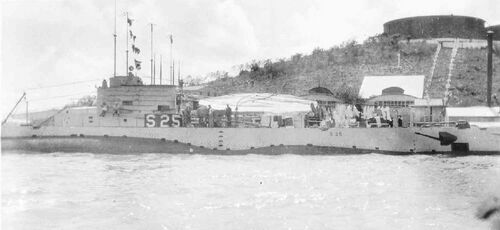
Photo in the private collection of Ric Hedman.
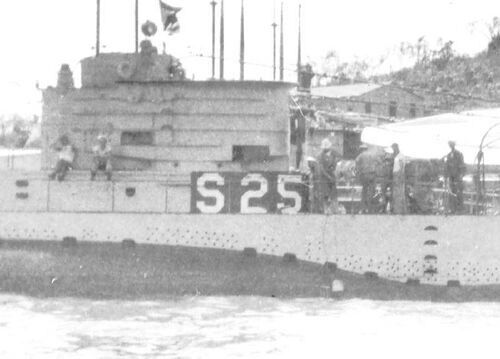
Photo in the private collection of Ric Hedman.
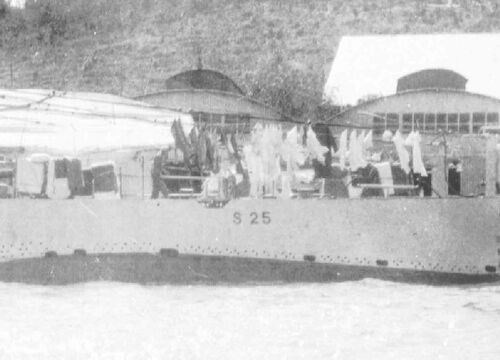
Photo in the private collection of Ric Hedman.
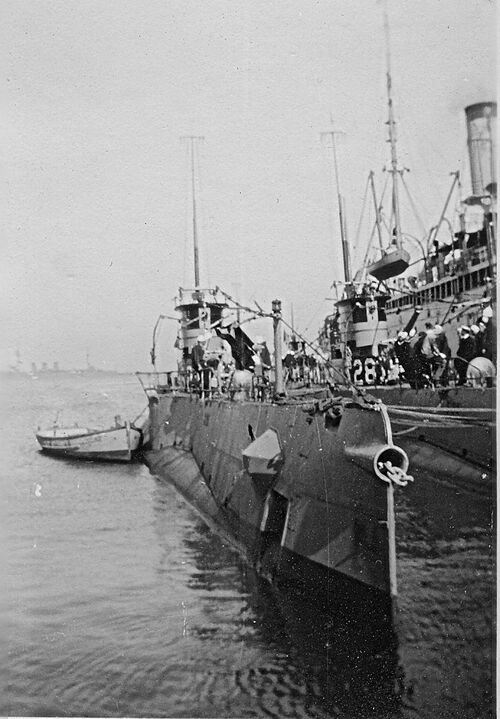
Photo in the private collection of Ric Hedman. NOT a U.S. Navy photo.
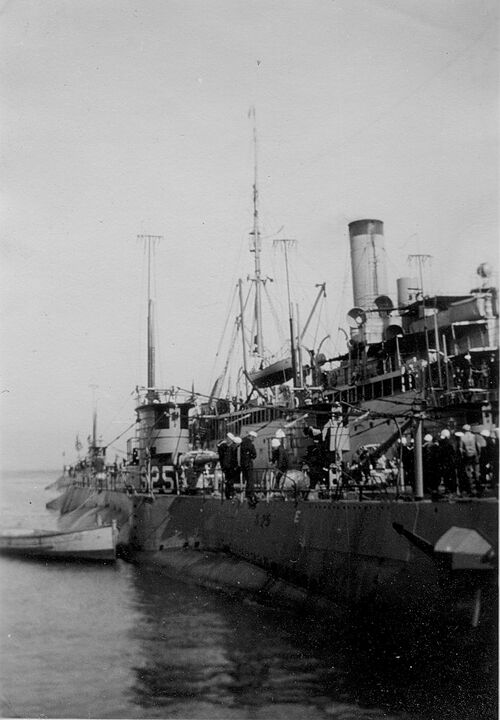
Photo in the private collection of Ric Hedman. NOT a U.S. Navy photo.
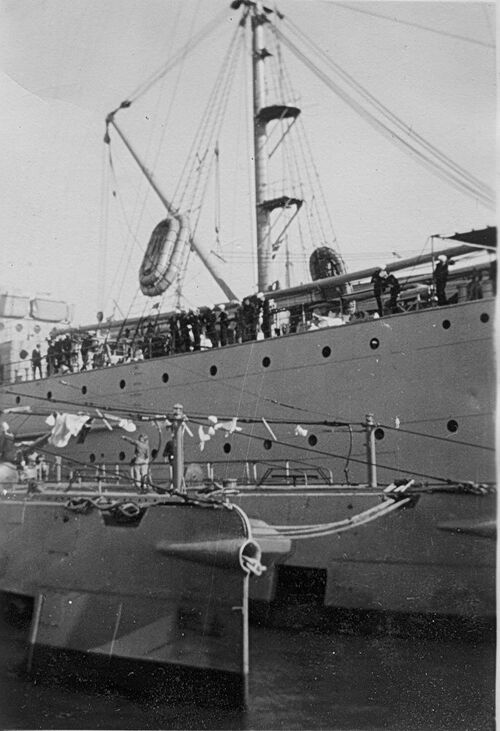
Photo in the private collection of Ric Hedman. NOT a U.S. Navy photo.
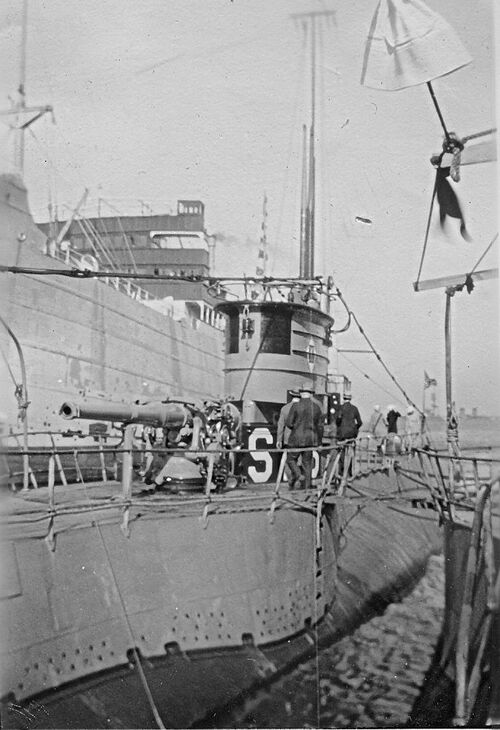
Photo in the private collection of Ric Hedman. NOT a U.S. Navy photo.
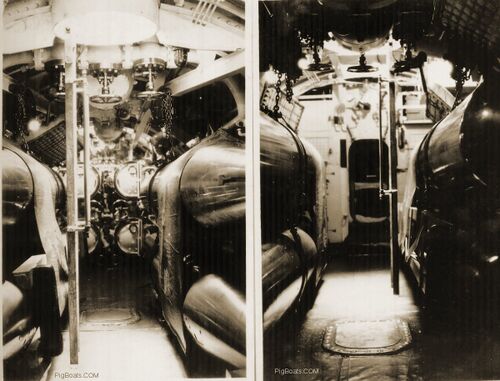
The left-hand photo is the view looking forward to the torpedo tubes. At the very top of the image is the torpedo room access hatch with the vertical ladder seen facing to port. There are "thump cloths" draped over the torpedoes to protect them for being hit or kicked and to keep them clean of any dirt or debris brought aboard by men ascending or descending the ladder. There is also a cloth on the other side to protect the torpedoes on that side from damage by the chain from the hoisting chain fall used in loading the torpedoes into the tubes.
The three large valves are the manual vents for one of the forward ballast tanks. To the left in the overhead is a single bunk.
The S-25 carried 12 Mark 10 Mod 3 torpedoes, designed by the Bliss-Leavitt Company but built at the Naval Torpedo Station Newport, R.I. Each was 16 1/2 feet long and 21 inches in diameter and could carry 497 pounds of TNT or 485 pounds of Torpex explosive. Less Torpex was needed than TNT because of its much higher explosive power. Four of the eight reloads can be seen in these photos. Four more were carried outboard these, with four in the tubes. These torpedoes were first issued in 1915 and used through WW II on the R and S class submarines. They were also occasionally fired by the fleet boats early in the war due to a shortage of Mk 14s.
The right-hand photo is looking aft and through the forward battery compartment door. Not much is recognizable. To the right and left in the photo are two bunks for crew.
Photo in the private collection of Ric Hedman. NOT a U.S. Navy photo.
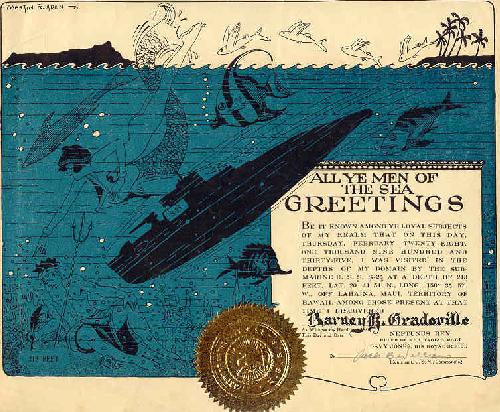
Photo in the private collection of Ric Hedman.
Photos in the private collection of Ric Hedman.
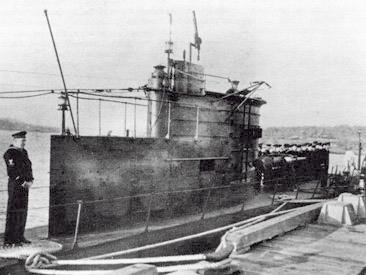
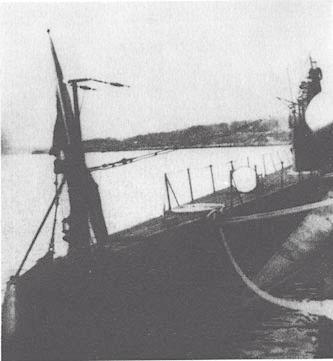
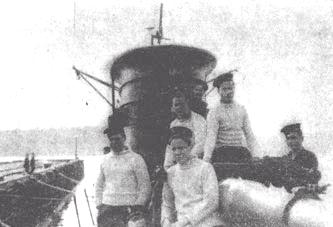
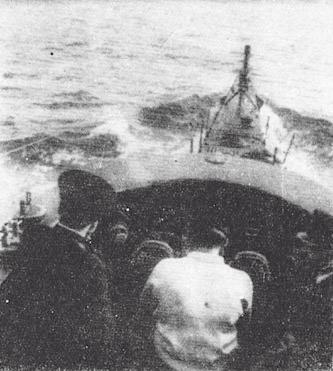
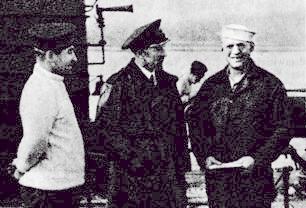
Page created by:
Ric Hedman & David Johnston
1999 - 2023 - PigBoats.COM©
Mountlake Terrace, WA, Norfolk, VA
webmaster at pigboats dot com


